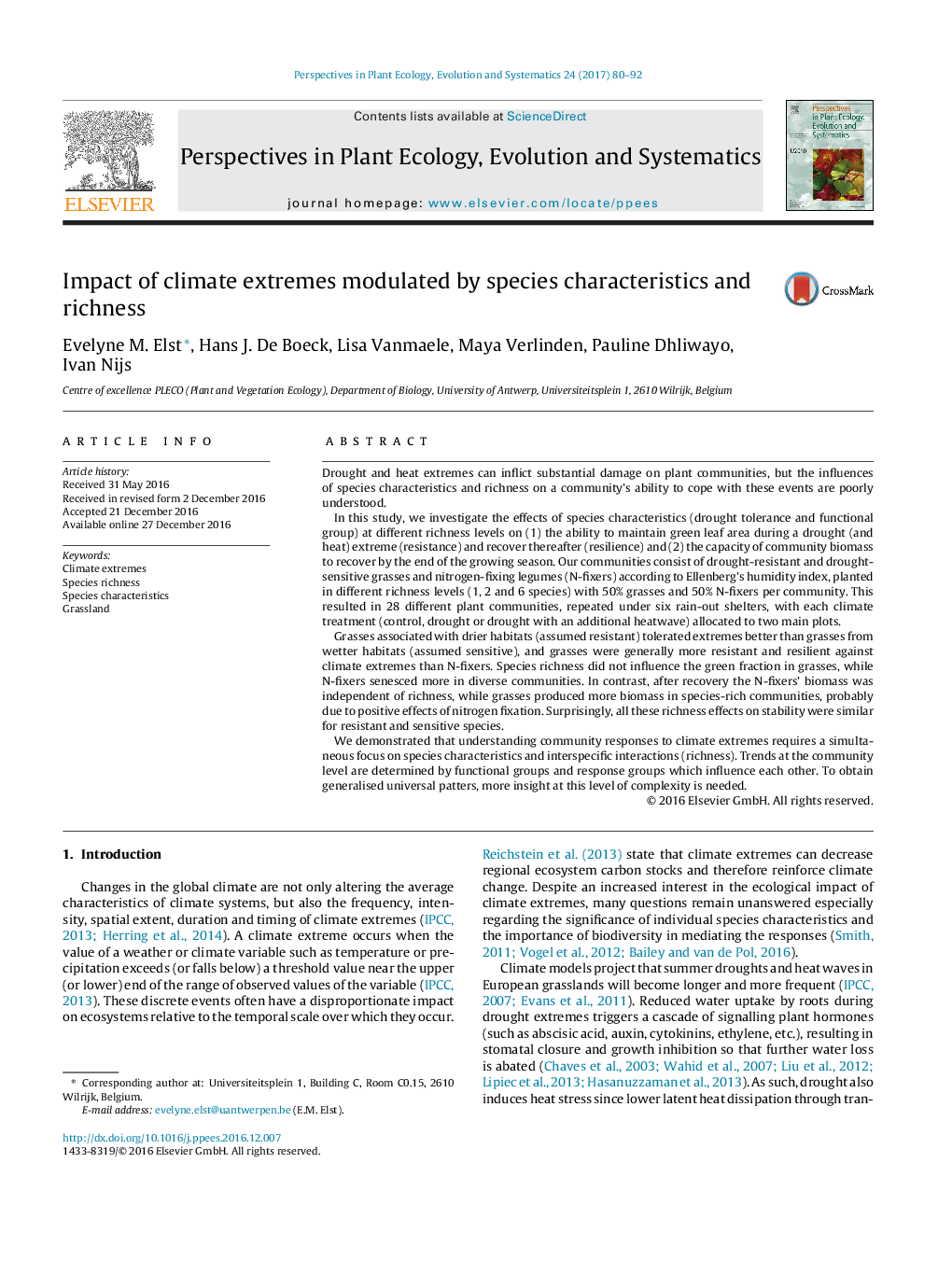| کد مقاله | کد نشریه | سال انتشار | مقاله انگلیسی | نسخه تمام متن |
|---|---|---|---|---|
| 5744984 | 1618596 | 2017 | 13 صفحه PDF | دانلود رایگان |
- Ellenberg's humidity index is a suitable proxy for resistance in grasses.
- Grasses had higher resistance and resilience to drought extremes than N-fixers.
- N-fixers exhibited increased senescence when the community was more diverse.
- Grasses produced more biomass when growing in more species-rich communities.
- Richness effects on stability were similar for resistant and sensitive species.
Drought and heat extremes can inflict substantial damage on plant communities, but the influences of species characteristics and richness on a community's ability to cope with these events are poorly understood.In this study, we investigate the effects of species characteristics (drought tolerance and functional group) at different richness levels on (1) the ability to maintain green leaf area during a drought (and heat) extreme (resistance) and recover thereafter (resilience) and (2) the capacity of community biomass to recover by the end of the growing season. Our communities consist of drought-resistant and drought-sensitive grasses and nitrogen-fixing legumes (N-fixers) according to Ellenberg's humidity index, planted in different richness levels (1, 2 and 6 species) with 50% grasses and 50% N-fixers per community. This resulted in 28 different plant communities, repeated under six rain-out shelters, with each climate treatment (control, drought or drought with an additional heatwave) allocated to two main plots.Grasses associated with drier habitats (assumed resistant) tolerated extremes better than grasses from wetter habitats (assumed sensitive), and grasses were generally more resistant and resilient against climate extremes than N-fixers. Species richness did not influence the green fraction in grasses, while N-fixers senesced more in diverse communities. In contrast, after recovery the N-fixers' biomass was independent of richness, while grasses produced more biomass in species-rich communities, probably due to positive effects of nitrogen fixation. Surprisingly, all these richness effects on stability were similar for resistant and sensitive species.We demonstrated that understanding community responses to climate extremes requires a simultaneous focus on species characteristics and interspecific interactions (richness). Trends at the community level are determined by functional groups and response groups which influence each other. To obtain generalised universal patters, more insight at this level of complexity is needed.
Journal: Perspectives in Plant Ecology, Evolution and Systematics - Volume 24, February 2017, Pages 80-92
